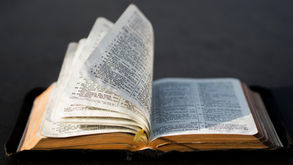House of `Abbud | House of Údí Khammár
- Uplifting Words
- Dec 31, 2018
- 2 min read
Updated: Feb 17
What is now known as the House of `Abbud in `Akka is in two parts: the eastern part, which was the house of `Udi Khammar and the western part, which was the house of `Abbud himself.
The eastern section was so insufficient to the needs of Baha'u'llah and His family that no less than thirteen persons had to be accommodated in one of its rooms.
Baha'u'llah had one room of the eastern section to Himself, and it was there that He revealed His Book of Laws, the Kitab-i-Aqdas (circa 1873).
Bahá'u'lláh wrote the Fire Tablet in the House of Abbud in 1871. Bahá'u'lláh wrote the tablet in response to questions by a Bahá'í believer from Iran. The tablet is written in rhyming verse, has the form of a conversation between Bahá'u'lláh and God, and reflects the sufferings of Bahá'u'lláh. Bahá'ís often recite this tablet in times of difficulty.
During this period, the animosity and slander against the Baha'is reached such a pitch that their children were stoned on sight, while `Abbud himself, whose residence was next to that of Baha'u'llah, was so influenced by what he heard, that he re-inforced the partition that separated the two dwellings.
At a later date, when the animosity of `Abbud towards the Baha'is had been overcome, he learned that the wedding of `Abdu'l-Baha was being delayed because of lack of accommodation. He therefore provided a room, situated between the two sections of the house, for the marriage of `Abdu'l-Baha and Munirih Khanum. Subsequently, `Abbud turned over the western part of the house to the Baha'is. Baha'u'llah then gave His room in the eastern part of the house to `Abdu'l-Baha, and occupied one of the rooms of the western section, which pilgrims now visit.
Once Bahá’u’lláh moved to the front of the house, He was better able to accommodate the flow of visitors, greeting them in His room. In contrast with His previous room that faced a city square, this chamber had a view of the Mediterranean Sea. Still under house arrest and not allowed to move about the prison city freely, Bahá’u’lláh went outside to this balcony frequently to greet His followers in the street below or to gaze upon the sea. Yet He longed to see greenery and to be in natural surroundings.
Baha'u'llah stayed in both parts of this house and in nearby houses for approximately seven years. During the latter years of His life, He also occasionally visited this house.
After the Ascension of Bahá'u'lláh, 'Abdu'l-Bahá continued to stay in that house, and it was while He was there that the rebellion of the Arch-Breaker of His Father's Covenant began. The Guardian refers to this house as "the scene of prolonged afflictions sustained by Founder of Faith, as well as supreme crisis suffered by 'Abdu'l-Bahá at hands of Covenant-breakers."
The houses now form a place visited on pilgrimage. The property is very clearly distinguished from all the surrounding properties because the external walls are painted white, unlike other houses in the area, which have a duller appearance. Pilgrims are shown Bahá'u'lláh's room, among others.





























